| << Chapter < Page | Chapter >> Page > |
An online survey was developed and electronically distributed through SurveyMonkey™ to 271 ETL graduates using email addresses stored in the university’s registration database. Demographic information was collected in the first portion. The second part included Likert-style items designed to collect personal perceptions and viewpoints on a 5-point scale ranging from strongly disagree (=1) to strongly agree (=5) regarding the personal use and implementation of online learning, Web 2.0 tools, and technology professional development in PK-12 schools. The Likert items were completed by 110 of the 271 possible participants (41%) and respondents were permitted to respond anonymous.
Survey respondents were represented by 16.4% ( n =18) males and 83.6% ( n =92) females. Table 1 indicates the population age ranges and percentages in each category and Table 2 identifies the ethnicities characterized by the respondents.
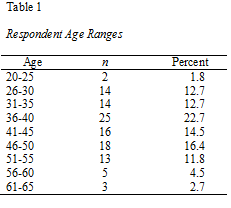
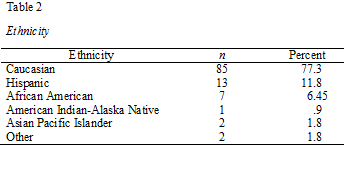
Graduate participants represented six states in the United States: Texas (92.7%), Alabama (.9%), California (.9%), Kentucky (.9%), Louisiana (2.7%), and Ohio (.9%). Additionally, one respondent was from an international setting (.9%). The respondent job roles included the following represented areas: PK-elementary school classroom teachers (33.6%), middle school classroom teachers (15.5%), high school classroom teachers (20.9%), PK-elementary school non-classroom staff (3.6%), middle school non-classroom staff (3.6%), high school non-classroom staff (6.4%), and PK-23 district office staff (17.3%). Table 3 shows the years of teaching experience represented by the respondents.
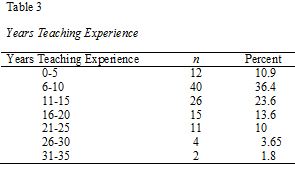
The Likert-style item responses were grouped and analyzed based upon assumption statements associated with personal use and implementation of online learning, Web 2.0 tools, and technology professional development in PK-12 schools. For the purpose of this study, an item response of not sure (=3) was considered a negative response as well as disagree (=2) and strongly disagree (=1). Positive responses were represented by answer choices of agree (=4) and strongly agree (=5). Respondents were grouped in job related categories and two data sets were formed. Data set one (Classroom Teachers) represented participants presently teaching in PK-12 classrooms and data set two (Non-Classroom Staff) included PK-12 staff working primarily in support roles such as technology facilitators, librarians, and curriculum coordinators within PK-12 school environments.
Online learning. Tables 4 through Tables 9 display the data collected regarding Assumptions 1 through 11.
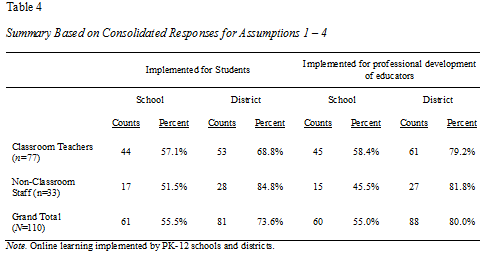
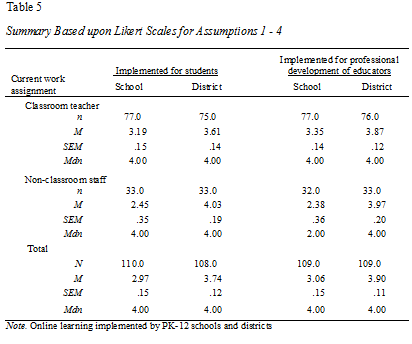
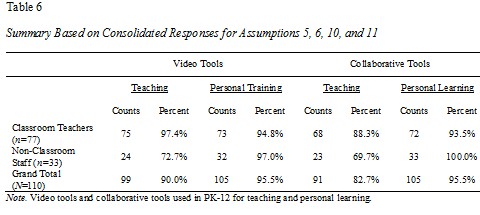
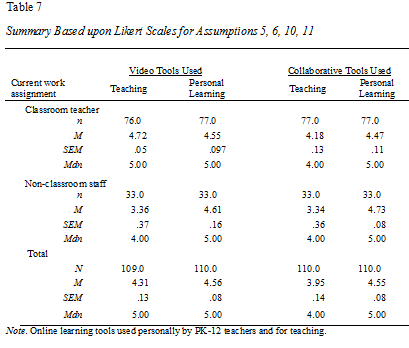
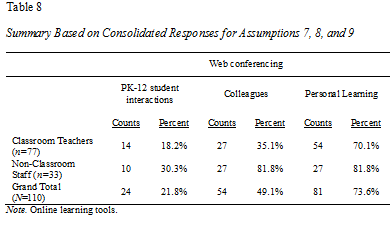
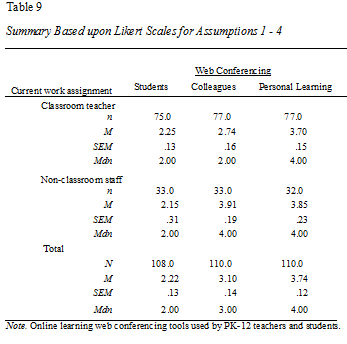
Web 2.0 tools. Table 10 and Figures 1, 2, and 3 display the data collected regarding Assumptions 12 through 14.
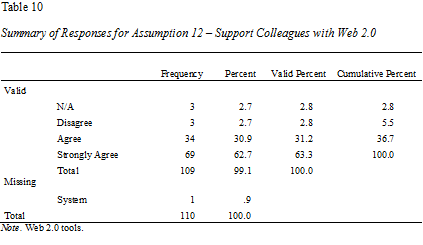



Technology professional development. Table 11 through Table 16 indicate the data collected regarding Assumptions 15 through 17.
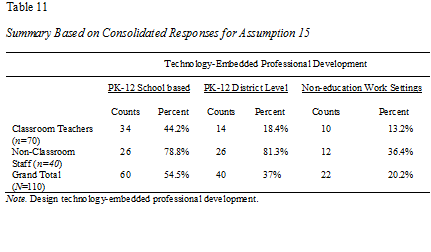
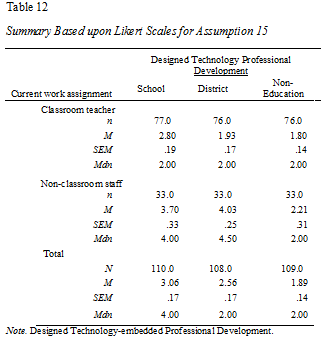
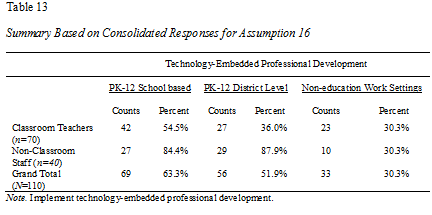
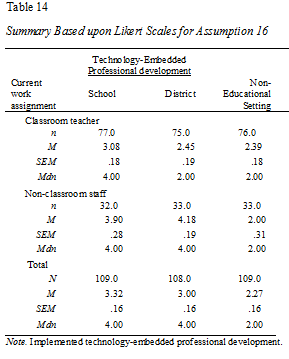
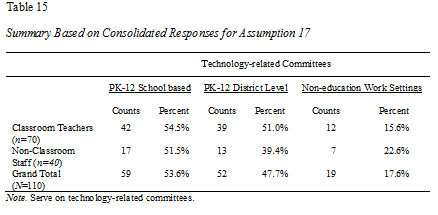
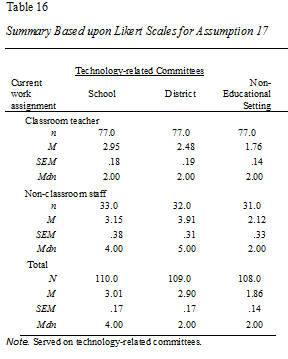
The open-ended survey questions were completed by 110 of the 271 possible participants (41%). Additionally, a purposeful sample of 60 graduates’ electronic portfolios were selected and examined to obtain additional qualitative data. The 60 electronic portfolios were representative of graduates who completed the program during the same timeframe as the 271 ETL graduate data pool. The electronic portfolio was a collection of artifacts and reflections gathered throughout the program coursework. Graduates’ writing and electronic portfolio components were analyzed to obtain qualitative data regarding graduate’s viewpoints and perceptions about online learning, Web 2.0 tools, technology professional development, and leadership. Specific sub-research questions were developed to guide an issue-focused analysis of the data. The main qualitative focused issue was related to what graduates say about the effectiveness of the ETL master’s program to advance personal leadership in the use of online learning, Web 2.0 tools, and technology professional development and whether there was of evidence of transference into PK-12 schools. The 60 graduates’ electronic portfolios were coded related to leadership in the following three major categories: online learning, Web 2.0 tools, and technology professional development. Then the categories were sorted to reveal key elements associated with the graduates’ work sampling such as personal leadership roles, online learning, technology tools, and professional development. Lastly, the identified key qualitative elements were incorporated with the quantitative data, thereby indicating program outcome effectiveness.

Notification Switch
Would you like to follow the 'Ncpea handbook of online instruction and programs in education leadership' conversation and receive update notifications?